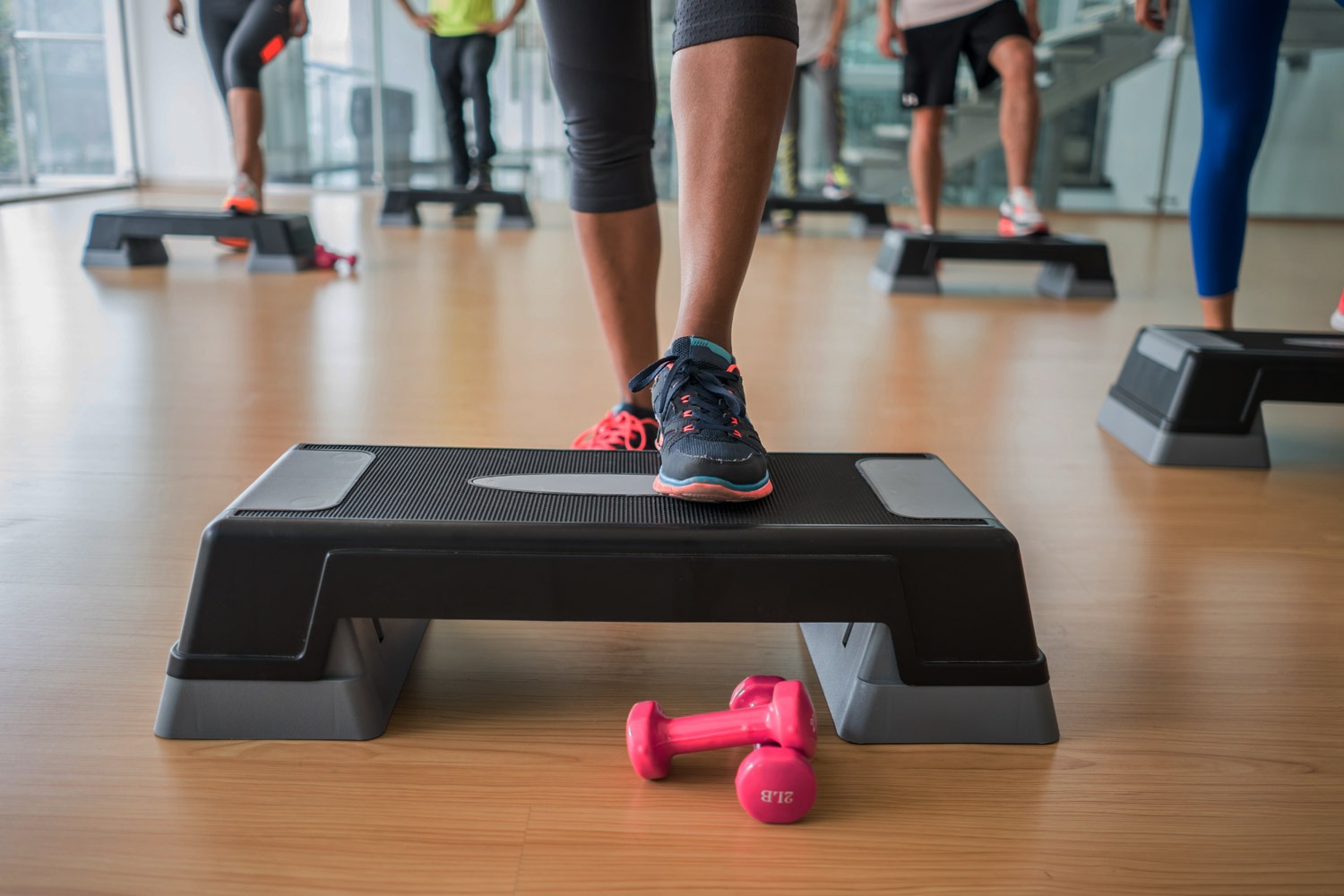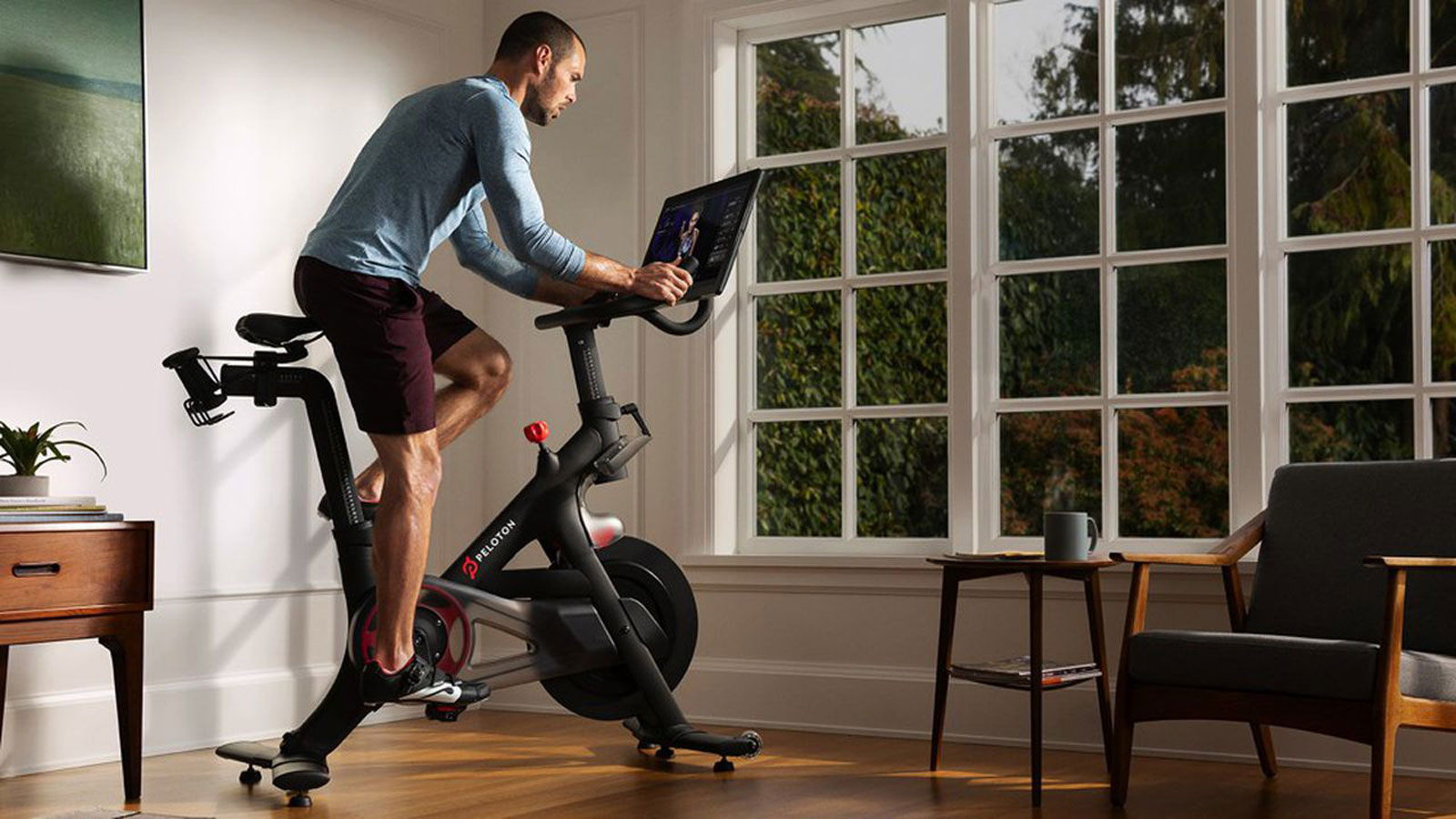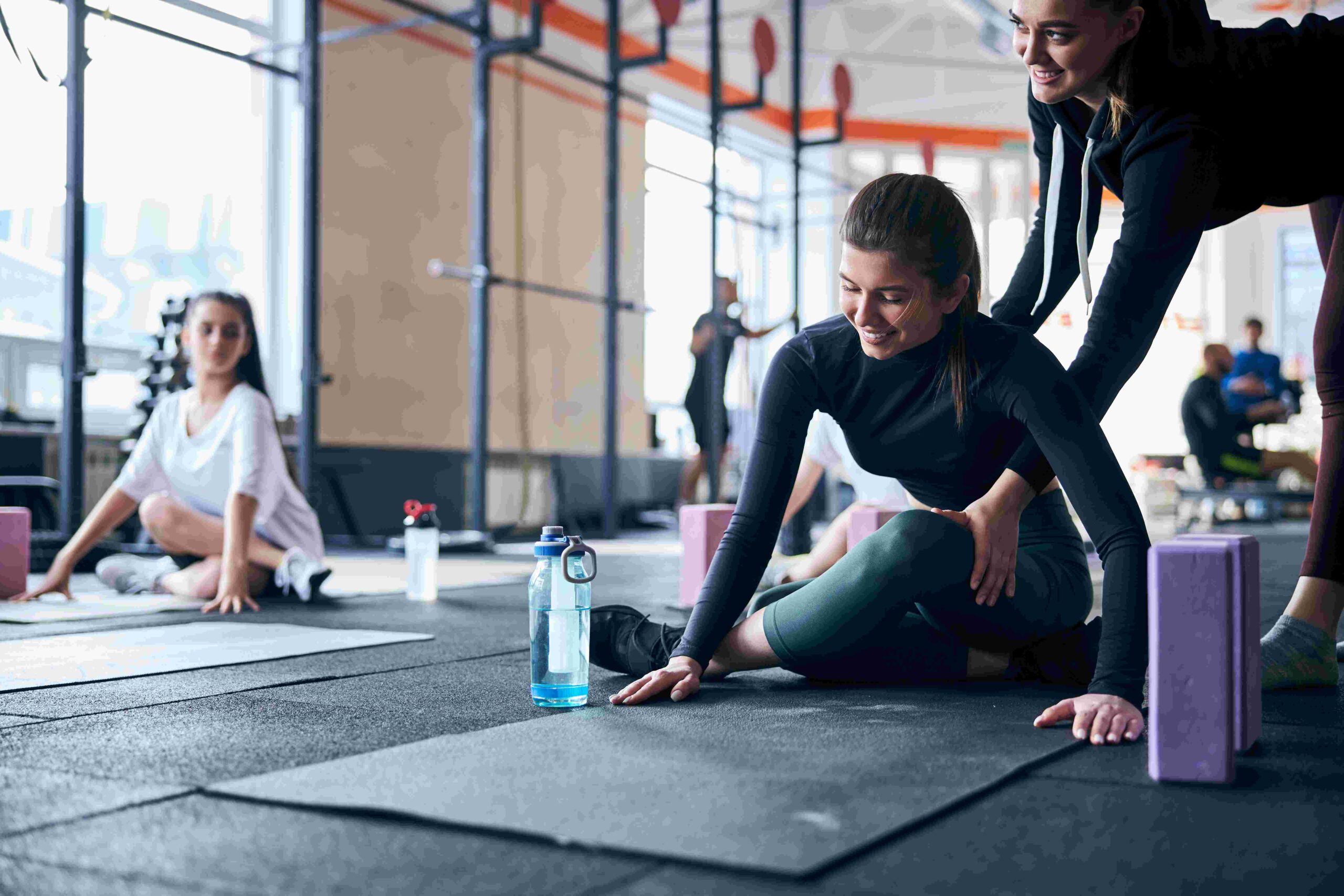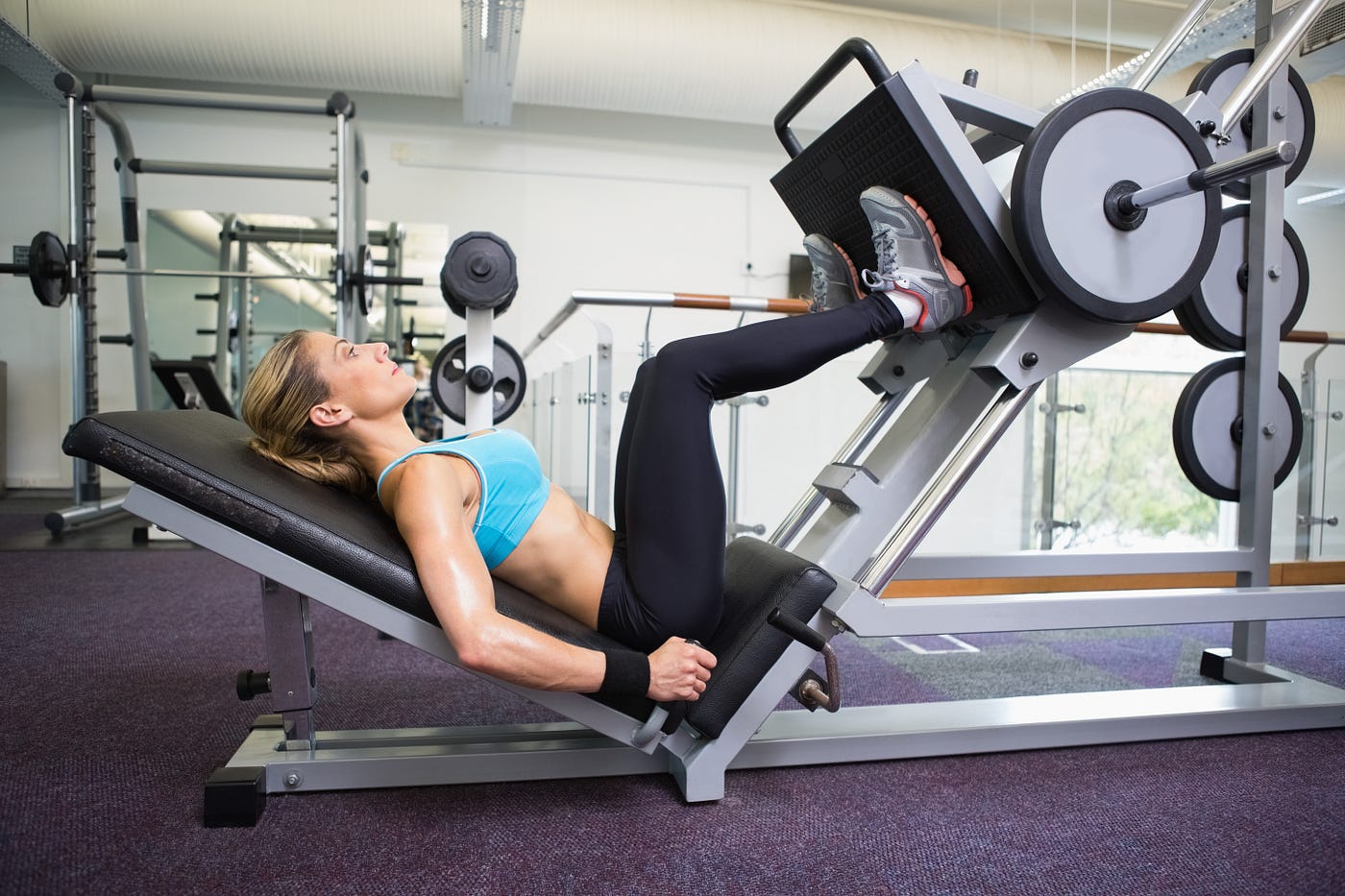Step workouts are an engaging way to improve your fitness while having fun. These routines combine cardio and strength exercises on a step platform, making them perfect for anyone looking to increase their heart rate without putting too much stress on the joints. You can experience significant physical benefits, including improved endurance, strength, and overall mood, by incorporating step workouts into your regular fitness routine.
Step workouts suit various skill levels, whether you are a beginner or more advanced. There is a wide range of routines available, from 25-minute beginner classes to longer, more intense sessions. This variety keeps your workouts fresh and can help you achieve your fitness goals, no matter where you start.
By focusing on step workouts, you not only boost your physical health but also enhance your overall well-being. These classes promote a positive experience through movement and rhythm, helping you stay motivated and committed to your fitness journey.
Key Takeaways
- Step workouts improve cardio, strength, and endurance.
- They offer low-impact options suitable for all fitness levels.
- Regular participation can enhance your overall mood and motivation.
Fundamentals of Step Workouts
Step workouts combine cardio with strength training to improve fitness levels. You’ll use a step platform to perform various movements. This section covers essential elements, including understanding the step platform, exploring basic moves, and ensuring safety with proper form.
Understanding the Step Platform
The step platform is a key tool in step workouts. It usually measures 4 to 8 inches in height, depending on your comfort and skill level. Beginners may want to start with a lower height to build confidence.
You can use the step with or without risers. For example, a basic platform with one riser gives you a total height of 6 inches. This is a good starting point. If you feel comfortable, adjust by adding more risers for greater intensity.
Basic Step Moves and Techniques
Familiarizing yourself with basic moves is vital for effective step workouts. Here are some common techniques:
- Basic Step: Step up onto the platform and step back down, alternating feet.
- V-Step: Start behind the step, step out to the sides while moving up, and return.
- Knee Lifts: Step onto the platform and lift your knee toward your chest.
Practice these moves to improve your footwork and rhythm. Work on transitioning smoothly between movements. This will enhance both your coordination and cardiovascular fitness.
Safety and Proper Form
Safety remains a priority during any workout. To maintain proper form, keep an upright posture, with your shoulders back and your core engaged. Avoid leaning too far forward or backward while stepping.
Make sure your footing is secure on the platform. Start slowly and increase your pace as you become more comfortable. If necessary, use a spotter, especially when trying new moves. Always listen to your body and modify exercises if you experience discomfort.
Physical Benefits of Step Workouts
Step workouts offer a range of physical benefits that can enhance your overall fitness. These include improvements in cardiovascular health, muscle strength, and flexibility, balance, and coordination. Engaging in step workouts can help you feel stronger and more agile.
Cardiovascular Health and Endurance
Step workouts are a fantastic way to boost your cardiovascular health. As an aerobic exercise, they elevate your heart rate effectively. This sustained activity enhances blood circulation and improves heart function.
When you participate in step workouts, you can burn approximately 300-400 calories per hour. This calorie-burning aspect promotes weight management. Over time, consistent participation can increase your endurance, allowing you to engage in other activities with ease.
Muscle Strength and Tone
Step workouts effectively target key muscle groups, including your glutes, hamstrings, and quads. By stepping up and down on the platform, you engage multiple muscles, which helps in building strength.
This exercise also promotes muscle tone, making your legs look leaner. The resistance of your body weight during the workout helps increase muscle endurance. Regularly practicing step workouts can lead to noticeable changes in your lower body strength.
Flexibility, Balance, and Coordination
Incorporating step workouts into your routine boosts flexibility, balance, and coordination. The movements require you to shift your weight, which enhances stability. Improved balance is crucial for daily activities and can help prevent injuries.
Furthermore, these workouts involve a variety of stepping patterns, which promote better coordination. As you practice, you’ll likely notice better control over your movements. This progress contributes to a more confident and agile physical presence in everyday life.
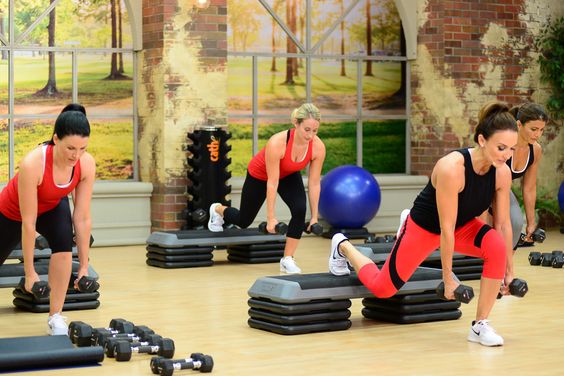
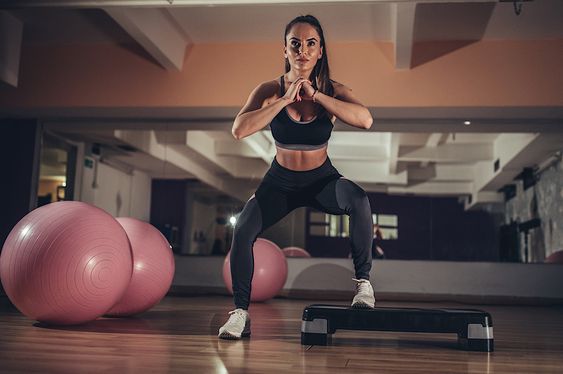
Step Workout Routines and Exercises
Step workouts offer a fun way to boost your cardio fitness while strengthening different muscle groups. They can be adapted for all fitness levels, making it easy to stay engaged and challenged. Here are various routines and techniques to enhance your step workout experience.
Beginning and Intermediate Routines
For beginners, starting with basic exercises is important. You can use a step platform to practice moves like the basic step-up, where you simply step up and down to get comfortable with the rhythm. A simple sequence could include:
- Basic Step-Up: 2 minutes
- Side Lunges: 1 minute each side
- Step Touch: 2 minutes
Once you’re comfortable, try intermediate moves such as reverse lunges. Stand on your step, lunge back with one leg, and return to start. Add mountain climbers for added intensity by alternating knee drives while maintaining a plank position on the step.
Advanced Techniques and Combinations
For those ready to level up, advanced routines can incorporate more complex movements. Combine different steps and lunges into your workout. Consider a circuit that includes:
- Step-Up with Bicep Curl (using dumbbells): 2 minutes
- Burpees: 1 minute
- Side Step with Knee Raise: 2 minutes each side
You can also mix foot patterns, like V-steps and over-the-top moves. These challenges not only build strength but also improve coordination. Always focus on maintaining good form to prevent injury.
Incorporating Weights and Resistance
Adding weights to your step routine can enhance muscle tone and strength. You can hold dumbbells while performing various step exercises.
For instance:
- Bicep Curl during a step-up: Improves arm strength while stepping.
- Use resistance bands during squats or lunges on the step for extra tension.
Consider creating a full routine with weights. Start with light dumbbells as you perform basic step-ups, followed by lateral lunges with resistance. This keeps your heart rate up while building muscles effectively. Adjust the weight according to your level for safety and effectiveness.
Holistic Health and Lifestyle Benefits
Engaging in step workouts offers a range of holistic health benefits that enhance both physical fitness and mental well-being. This activity can improve your mood, boost long-term health, and easily fit into your daily routine.
Impact on Mental Health and Mood
Step workouts can have a positive effect on your mental health. Physical activity releases endorphins, which are known to improve your mood. By participating in regular step workouts, you may experience decreased feelings of anxiety and stress.
Studies suggest that cardiovascular exercises, like step aerobics, help improve executive functioning. This means you can enhance your focus, decision-making, and problem-solving skills. Feeling energized after a workout can also help clear your mind and elevate your spirits.
Long-term Health Benefits
Step workouts contribute to various long-term health benefits. Regular participation can help manage conditions like diabetes by improving insulin sensitivity. You can lower your risk for cardiovascular diseases as well by maintaining a healthy heart rate.
Additionally, step workouts strengthen your bones and boost bone metabolism. Enhanced bone strength is crucial as you age, helping to reduce the risk of fractures. Engaging in this type of exercise can also improve your agility and overall fitness level.
Incorporating Step Workouts into Daily Life
Integrating step workouts into your regular routine is effective and simple. You can start with just 10 minutes a day and gradually increase the duration. Look for staircases, step benches, or even a sturdy platform at home.
To make it easier, try breaking your workouts into shorter sessions throughout the day. For added motivation, consider joining a step aerobics class or using a fitness app. With these strategies, you can enjoy the benefits of step workouts while fitting them into your busy life.
Frequently Asked Questions
Step workouts offer various benefits and can be adapted for different fitness levels. Here are some common questions people have about step workouts to help you get started and make the most of your routines.
What are the primary benefits of engaging in step workouts?
Step workouts improve cardiovascular fitness, strength, and coordination. They target the lower body muscles, including the quads, hamstrings, and glutes. These workouts also burn calories and can help with weight management.
How can beginners get started with step workouts effectively?
Start with a low step height to avoid injury and focus on basic movements. Consider joining a beginner class or following online tutorials to learn proper form. Begin with short sessions, gradually increasing duration and intensity as you build confidence and strength.
Which exercises can be included in a step workout plan for at-home routines?
You can include exercises like step-ups, side steps, and box jumps. Additionally, lunges and knee lifts can be added for variety. Incorporate aerobic movements like marching or tapping to music to keep the workout fun and engaging.
What are the best video resources for step workout routines?
YouTube has many channels dedicated to step workouts, offering free classes for all levels. Look for videos that provide clear instructions and modifications. Fitness apps often include step workout features, allowing you to follow along with guided sessions at your convenience.
How can step workouts be adapted for senior fitness levels?
Use a lower step height and focus on stability and balance exercises. Slow down the pace and incorporate rest breaks as needed. It’s essential to ensure that movements are safe and comfortable to promote confidence and prevent falls.
Can incorporating weights into step workouts enhance the results?
Yes, adding weights can increase the intensity and effectiveness of your workout. Dumbbells or weighted vests can help build muscle and improve strength. Start with light weights to ensure proper form and gradually increase as your strength improves.
